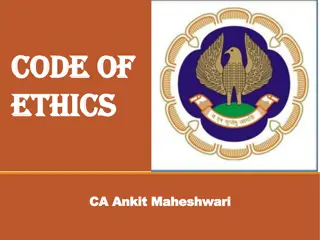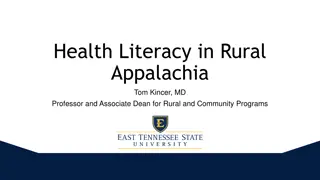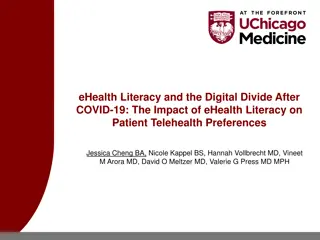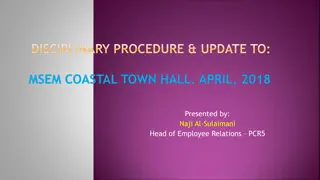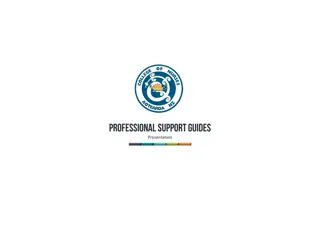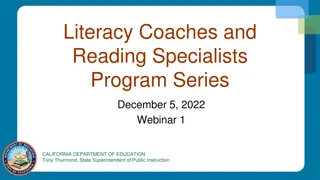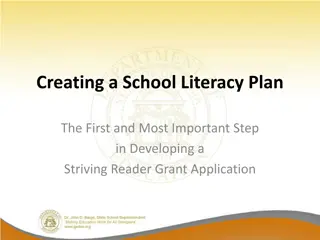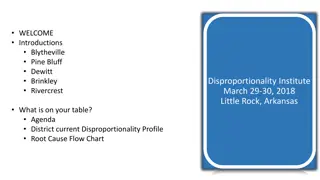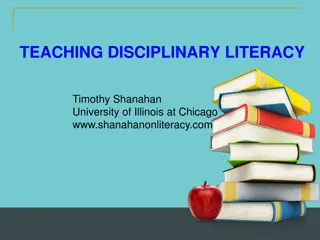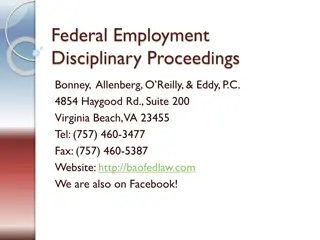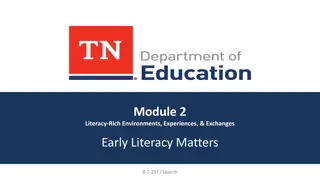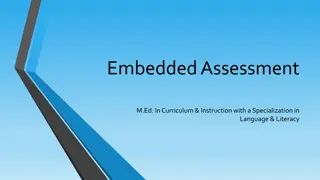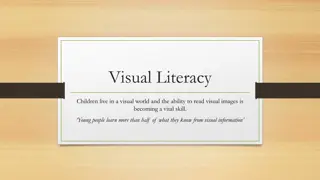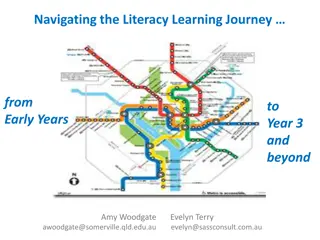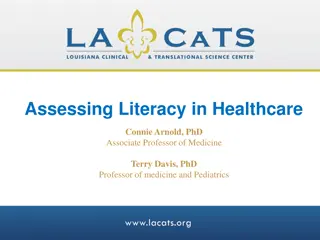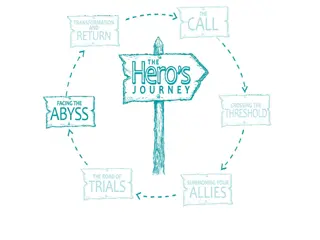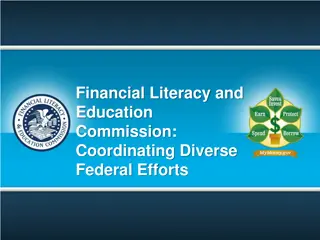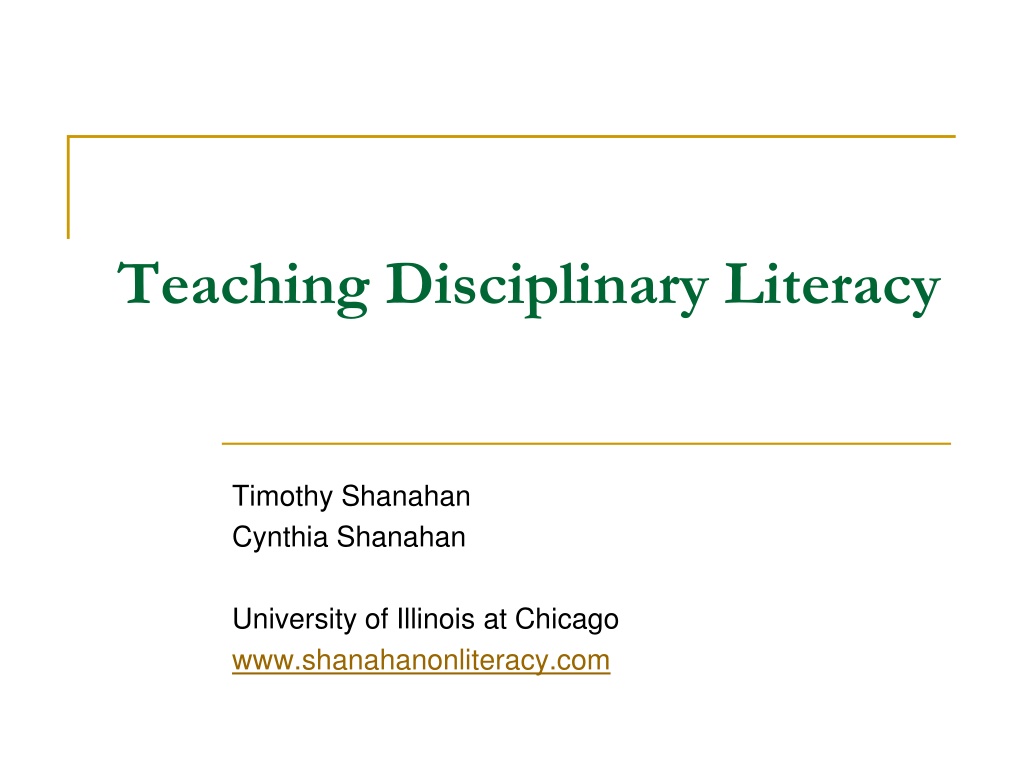
Disciplinary Literacy Overview and Implications
Disciplinary literacy is a crucial element in education, highlighted in the Common Core State Standards and beyond. It involves mastering specific text features within a discipline's context and has instructional implications. Understanding its origins, controversies, and implications is essential for educators. Explore the complexities of disciplinary literacy with this comprehensive overview.
Download Presentation

Please find below an Image/Link to download the presentation.
The content on the website is provided AS IS for your information and personal use only. It may not be sold, licensed, or shared on other websites without obtaining consent from the author. If you encounter any issues during the download, it is possible that the publisher has removed the file from their server.
You are allowed to download the files provided on this website for personal or commercial use, subject to the condition that they are used lawfully. All files are the property of their respective owners.
The content on the website is provided AS IS for your information and personal use only. It may not be sold, licensed, or shared on other websites without obtaining consent from the author.
E N D
Presentation Transcript
Teaching Disciplinary Literacy Timothy Shanahan Cynthia Shanahan University of Illinois at Chicago www.shanahanonliteracy.com
Disciplinary Literacy Is emphasized in the Common Core State Standards, but also in the standards of non- CCSS states (e.g., Indiana, Texas) Is a hot topic within the field and in the nation (ILA, 2017) Is the subject of 50+ books sold on Amazon
Disciplinary Literacy But what is it? Where did it come from? Why does it matter?
Disciplinary Literacy Mastery over specific text features or rhetorical or sociocultural conventions of the written discourse used to argue knowledge claims in a disciplinary context and its subspecialties (Berkenkotter, et al., 1988) A part of the constellation of specialized thinking inherent in a discipline Concept comes from sociolinguistics, writing- across-the-curriculum, etc. work on discourse communities
Controversies Boundaries of disciplinary communities Distinctions among basic knowledge, epistemological approaches, and literate practices of a field Distinctions between disciplinary literacy and content area reading Each of these three controversies have instructional implications
Disciplinary Communities Original intellectual stretch was to treat disciplines as discourse communities Discourse community is a group of people who share a set of discourses (including hared goals, purposes, values, assumptions) and ways of communicating Overlap with other discourse communities (literate persons, learners, academics, etc.) Subspecializations
Implications of Disciplinary Literacy Controversies Important to develop both basic literacy skills (that underlie or are used in multiple disciplines) as well as highly specialized skills that are uniquely implicated in the ways a particular discipline creates, communicates, and critiques knowledge Need to make sure that what is being taught about disciplinary literacy is relevant to the texts that are to be read
Disciplinary Expertise vs. Literacy More to being part of a rhetorical community than shared discourse practices Specific content knowledge is crucial So is an understanding of the methods of inquiry Disciplinary literacy is not a discrete set of skills or awarenesses requires both content knowledge and appreciation of methodologies (those explain why these particular literate practices are used)
Instructional Implications of the Narrowness of Disciplinary Literacy Importance of implicating disciplinary literacy instruction in the consideration of content and its methodology Foolishness of decontextualizing disciplinary literacy from the purposes of the field of study Common Core standards are dovetailed with New Generation Science Standards and C3 Social Studies Standards
Disciplinary Literacy vs. Content Area Reading Content area reading is more widely known (e.g., state teacher preparation requirements, textbooks, workshops) There is confusion (some intentional) between these two instructional approaches Many districts are ignoring standards requirements because of the confusion We ll frame this explanation of disciplinary literacy as a comparison of the two concepts
Disciplinary Reading Instruction Not the hip new name for content area reading Each discipline possesses its own , purposes, and ways of using text that students should be inducted into There are special skills and strategies needed for students to make complete sense of texts from the disciplines As students begin to confront these kinds of texts (especially in middle school and high school), instruction must facilitate their understanding of what it means to read disciplinary texts
Comparing Content Area Reading and Disciplinary Literacy Content Area Reading Reading experts since 1920s Disciplinary Literacy Wider range of experts since 1980s Source
Sources of Content Area Reading In 1920s, the idea of every teacher a teacher of reading first raised Rhetoric is good, but fundamental idea is that reading experts know the necessary reading skills and that those should be taught across the curriculum Leads to the development of lots of general study skills approaches: SQ3R, KWL, three-level guides, etc. Research focuses on effectiveness of these instructional routines (accordingly, content reading approaches are pedagogical in nature)
Sources of Disciplinary Literacy Studies that compare expert readers with novices (Bazerman, 1985; Geisler, 1994; Wineburg, 1991, etc.) Functional linguistics analyses of the unique practices in creating, disseminating, evaluating knowledge (Fang, 2004; Halliday, 1998; Schleppegrell, 2004, etc.)
History Reading (Wineburg) Sourcing: considering the author and author perspective Contextualizing: placing the document/info within its historical period and place Corroboration: evaluating information across sources
Increasing Specialization of Literacy Disciplinary Literacy Intermediate Literacy Basic Literacy
Comparing Content Area Reading and Disciplinary Literacy Content Area Reading Reading experts since 1920s Generalizable Disciplinary Literacy Wider range of experts since 1990s Specialized Source Nature of skills
Generalizable vs. Specialized Skills Content area reading is based on the idea that reading and writing are highly generalizable skills Consequently, content area literacy instruction provides students with a toolbox of strategies to use with any kind of text But disciplinary literacy focuses not on what is the same across the disciplines, but what is unique or specialized Disciplinary literacy strategies are based on the demands of the text and the purposes of the discipline
Content area reading Generalizable skills and activities that can be used in all or most reading: KWL Summarization SQ3R Previewing Word maps Brainstorming Frayer model Notetaking 3-level guides QAR DR-TA I-Charts Morphological analysis Reciprocal teaching
Disciplinary reading Specialized skills and activities Idea is to consider the learning demands of a subject matter Example: textbook use Science - Essential History - Antithetical Literature - Irrelevant
Chemistry Note-taking Atomic Expression Substances Properties Processes Interactions
Character Change Chart What is main character like at the beginning of the story? What is the main character like at the end of the story? How has he or she changed? Crisis Given this character change, what do you think the author wanted you to learn? ________ ________________________________________________________________________ ________________________________________________________________________
Content Area Vocabulary Students need to learn terminology in all fields The same study techniques would accomplish this no matter what the words Graphic organizers, semantic maps, word sorts, rate knowledge of words, analyze semantic features of words, categorizing/mapping words, synonym webs, etc.
Disciplinary Literacy Vocabulary Of course, fields have different vocabulary Focus is on specialized nature of vocabulary of the subjects Science: Greek and Latin roots (precise, dense, stable meanings that are recoverable) History: metaphorical terms, terms with a political point of view
Disciplinary Vocabulary: Science Focus is on specialized nature of vocabulary in each subject area Example: DNA (deoxyribonucleic acid) is a nucleic acid that includes a sugar (ribo) but without (de) oxygen (oxy) Example: annual-perennial, proton- neutron, prokaryote-eukaryote
Disciplinary Vocabulary: History History: metaphorical terms, terms with a political point of view Example: Revolutionary movements in Europe and Asia were described to the American public as examples of Soviet Expansionism . (Zinn, A People s History); Example: Civil War, War between the States, War of Northern Aggression. Example: The Gilded Age
Disciplinary Vocabulary: Literature Literature: Words that evoke emotion, the senses. Example: where I would have lived through all that impassioned, insane joy of the hunt, when as I climb the rock, my face contorted, gasping, shouting voluptuously senseless words (Nabokov, Father s Butterflies).
Teach students to use reference works Dictionary instruction But using the more specialized reference works from a field of study
Sugar example: General dictionary a sweet crystalline substance obtained from various plants, especially sugar cane and sugar beet, consisting essentially of sucrose, and used as a sweetener in food and drink.
Sugar example: Science dictionary (saccharide) Any of a group of water soluble carbohydrates of relatively low molecular weight and having a sweet taste. The simple sugars are called monosaccharides. More complex sugars comprise between two and ten monosaccharides linked together: disaccharides contain two, trisaccharides, three, and so on. The name is often used to refer specifically to sucrose (cane or beet sugar). The suffix -ose is used in biochemistry to form the names of sugars.
Sugar example: Science dictionary (saccharide) Any of a group of water soluble carbohydrates of relatively low molecular weight and having a sweet taste. The simple sugars are called monosaccharides. More complex sugars comprise between two and ten monosaccharides linked together: disaccharides contain two, trisaccharides, three, and so on. The name is often used to refer specifically to sucrose (cane or beet sugar). The suffix -ose is used in biochemistry to form the names of sugars.
Battleship example (history): General dictionary Any of a class of warships that are the Most heavily armored and are equipped With the most powerful armament.
Battleship example (history): History dictionary U.S. battleship is usually distinguished from its foreign counterparts by its heavy gun armament, sturdy protection, and relatively slow speed. Three distinct subtypes: 27 mixed-battery ships built 1888-1908; 22 all- big-gun dreadnoughts (1910-1923); and 10 fast battleships (1937-1944). Stricken from the Navy s lists in January 1995. As ship killers, the battleships saw little action; yet they ultimately justified their existence in important subsidiary missions, the most significant being gunfire support for troops ashore.
Battleship example (history): History dictionary U.S. battleship is usually distinguished from its foreign counterparts by its heavy gun armament, sturdy protection, and relatively slow speed. Three distinct subtypes: 27 mixed-battery ships built 1888-1908; 22 all- big-gun dreadnoughts (1910-1923); and 10 fast battleships (1937-1944). Stricken from the Navy s lists in January 1995. As ship killers, the battleships saw little action; yet they ultimately justified their existence in important subsidiary missions, the most significant being gunfire support for troops ashore.
Paroxysm: Literature or Medicine Literature: a sudden outburst of emotion or action: a paroxysm of laughter Medicine: a sudden onset of a symptom or disease, especially one with recurrent manifestations such as the chills and rigor of malaria
Comparing Content Area Reading and Disciplinary Literacy Content Area Reading Reading experts since 1920s Generalizable Use of reading and writing to study/learn information Disciplinary Literacy Wider range of experts since 1990s Specialized How literacy is used to make meaning within a discipline Source Nature of skills Focus
Content area reading The focus is on learning from text The idea is not to read like a chemist, but to know how to study books (including chemistry books) Emphasis on literacy learning tools: Exit notes Advanced organizers Response journals Dictionary Internet Readability analysis
Disciplinary reading The focus is on the specialized problems of a subject area Disciplines represent cultural differences in how information is used, the nature of language, demands for precision, etc.
Cultural Differences The differences among the disciplines are more than content/information differences They are separated by differences in how information is created, used, evaluated in the nature of the language, demands for precision, etc. Disciplinary Literacy requires enculturation and acculturation
Culture of Mathematics Goal: arrive at truth Importance of close reading an intensive consideration of every word in the text Rereading a major strategy Heavy emphasis on error detection Precision of understanding essential
Culture of Science (Chemistry) Text provides knowledge that allows prediction of how the world works Full understanding needed of experiments and processes Close connections among prose, graphs, charts, formulas (alternative representations of constructs an essential aspect of chemistry text) Major reading strategies include corroboration and transformation
Culture of History History is interpretative, and authors and sourcing are central in interpretation (consideration of bias and perspective) Often seems narrative without purpose and argument without explicit claims (need to see history as argument based on partial evidence; narratives are more than facts) Single texts are problematic (no corroboration)
Instruction vs. Enculturation Students are students they do need to learn how to read generally, how texts work generally, and how to study Disciplinary literacy does not address everything necessary for instruction Motivation, for example, is not disciplinary literacy (and, yet it matters); the same can be said about memorization A field s culture is relevant only in the sense that it reveals how and why disciplinary texts may be read in a particular way
Comparing Content Area Reading and Disciplinary Literacy Content Area Reading Reading experts since 1920s Generalizable Use of reading and writing to study/learn information Remedial Disciplinary Literacy Wider range of experts since 1990s Specialized How literacy is used to make meaning within a discipline Whole distribution Source Nature of skills Focus Students
Content area reading Content area reading is promoted for all students But the strategies that are taught tend to work best with younger and lower level readers with little evident benefit for average and higher readers Teachers often won t use approaches that don t have a wider impact than that
Disciplinary reading Effectiveness has, for the most part, not yet been tested However, the nature of the activities that have been developed so far suggest a wider range of learning benefits
Comparing Content Area Reading and Disciplinary Literacy Content Area Reading Reading experts since 1920s Generalizable Use of reading and writing to study/learn information Remedial Often encourages use of literary text Disciplinary Literacy Wider range of experts since 1990s Specialized How literacy is used to make meaning within a discipline Whole distribution Only focuses on disciplinary text Source Nature of skills Focus Students Texts
Content Area Reading Often promotes reading of plays, short stories, novels, poems for math, science, and history Thematic units and integrated curriculum (focused on the non-disciplinary use of disciplinary information)
Disciplinary Literacy Language differs across disciplines, so it is critical that readers confront the language of their discipline The Friendly Textbook Dilemma
History Reading (Fang & Schleppergrell) History text constructs time and causation Attributes agency (readers need to focus on the reasons for actions and the outcomes of those actions cause/effect) Presents judgment and interpretation (argument) Often narratives with lack of clear connections to thesis

